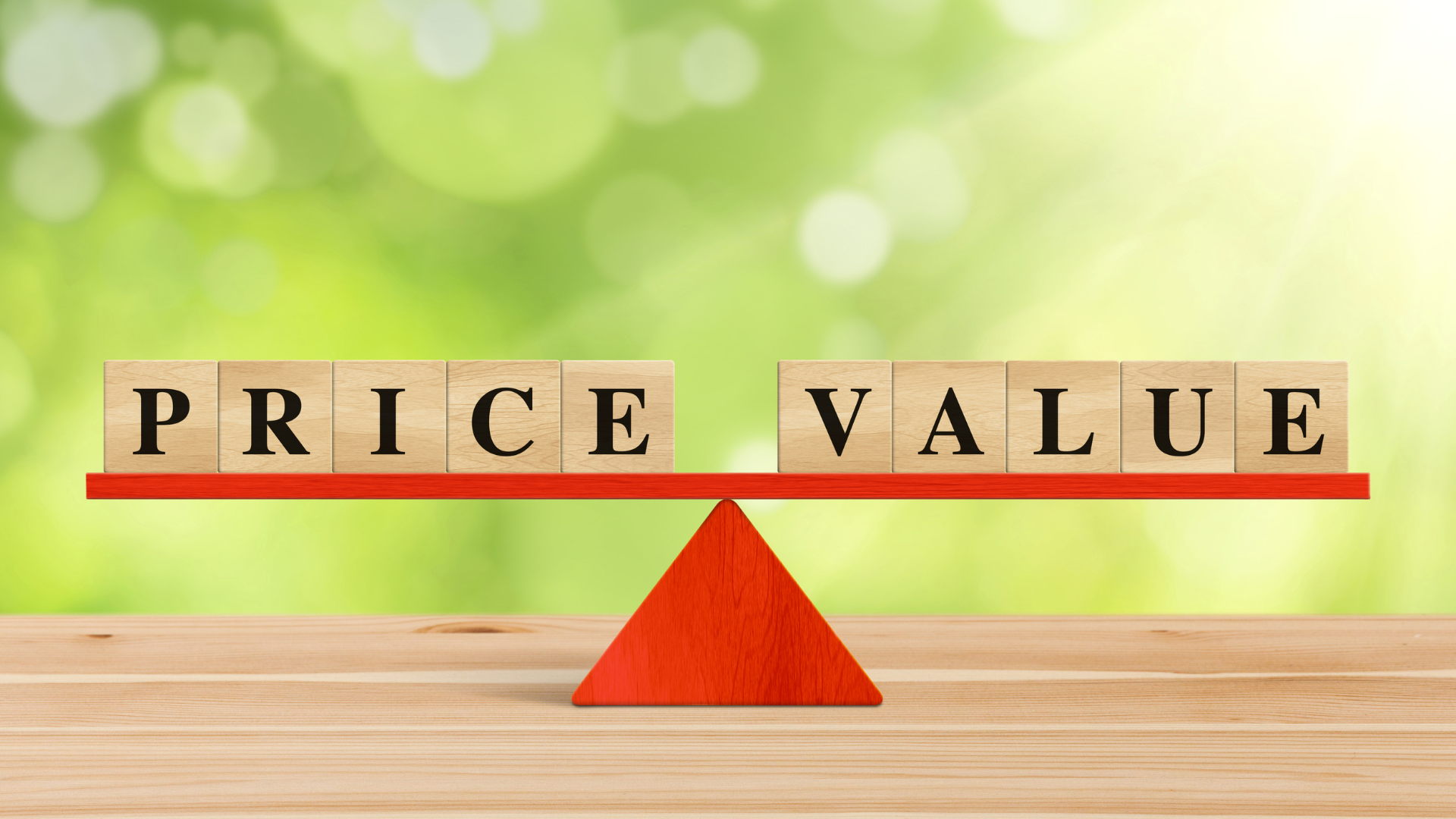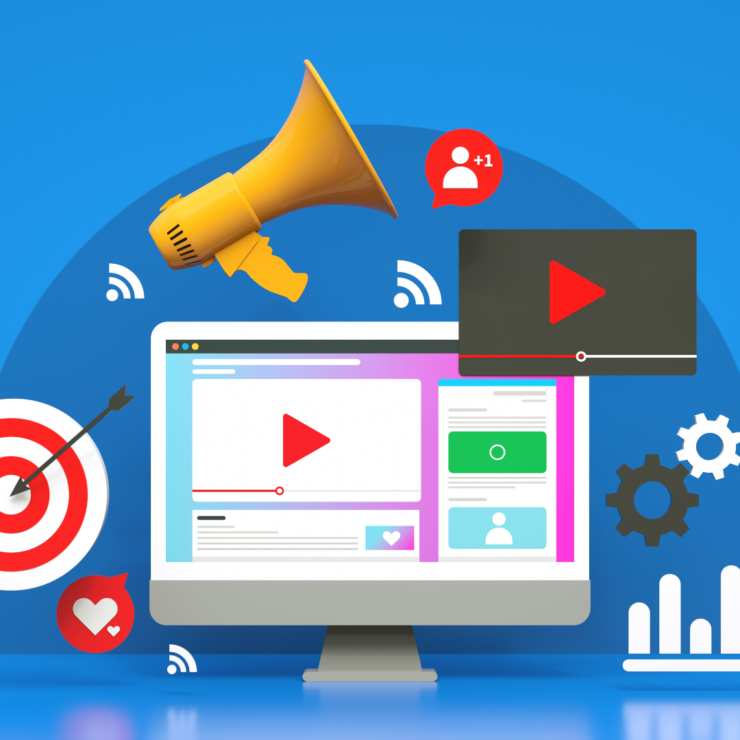Lets delve into the realm of retail pricing strategies for first-time sales on Shopify. We will explore the various factors that businesses need to consider when setting their pricing strategies, as well as the different approaches they can adopt to maximize profitability and customer acquisition. Whether you are just starting your Shopify journey or looking to optimize your existing pricing strategies, this guide will provide you with valuable insights and actionable tips.
The Importance of Retail Pricing Strategies on Shopify
Setting the right prices for your products is vital for several reasons. First and foremost, pricing affects the perceived value of your products in the eyes of your target market. A well-thought-out pricing strategy can position your brand as either high-end and exclusive or affordable and accessible.
Furthermore, pricing directly impacts your ability to achieve profitability and sustain your business in the long run. By setting prices that cover your costs and generate a healthy profit margin, you can reinvest in your business, improve your products, and expand your reach.
For first-time sales on Shopify, pricing strategies become even more critical. As new businesses, you need to establish a strong customer base and create a positive impression among potential buyers. Your pricing decisions in the early stages can significantly impact customer perception, market competitiveness, and the overall success of your venture.
Now, let’s dive into the world of retail pricing strategies on Shopify and explore the key considerations and approaches that will set you on the path to success.
Understanding Retail Pricing Strategies
To effectively navigate the world of retail pricing strategies on Shopify, it is essential to first grasp the concept and significance of these strategies. Retail pricing strategies refer to the deliberate and systematic approach taken by businesses to determine the prices at which they sell their products or services. These strategies involve considering various factors, such as costs, competition, target market, and desired profit margins, to set prices that are attractive to customers while still ensuring profitability.
When it comes to pricing strategies for first-time sales on Shopify, there are several key factors to consider. Let’s explore these factors in detail:
Cost of Goods Sold (COGS)
Understanding and accurately calculating the cost of goods sold (COGS) is crucial for setting profitable prices. COGS includes the direct costs associated with producing or acquiring the products, such as raw materials, manufacturing expenses, packaging, and shipping. By analyzing and determining the COGS, you can establish a baseline for your pricing decisions and ensure that your prices cover your production costs.
Competitor Analysis
Conducting thorough research and analysis of your competitors’ pricing strategies is essential for gaining a competitive edge. By understanding how your competitors price their products, you can position your prices strategically to differentiate yourself in the market. Analyze factors such as the pricing range, discounts, promotions, and perceived value to identify gaps and opportunities that you can leverage.
Target Market and Customer Persona
Understanding your target market and customer persona is fundamental to developing effective pricing strategies. Consider the demographics, preferences, and purchasing behaviors of your target audience. Are they price-sensitive or value-driven? Are they willing to pay a premium for high-quality products? By aligning your prices with the expectations and willingness to pay of your target market, you can ensure that your pricing strategy resonates with your customers.
Profit Margin Goals
Setting profit margin goals is crucial for sustaining your business and achieving long-term growth. Determine the profit margin you aim to achieve for each product or category, taking into account factors such as overhead costs, marketing expenses, and desired return on investment (ROI). Your profit margin goals should strike a balance between profitability and market competitiveness.
Value Proposition and Unique Selling Points
Your value proposition and unique selling points play a significant role in determining your pricing strategies. Identify the key features, benefits, or differentiators that set your products apart from competitors. These unique selling points can justify premium pricing or enable you to offer competitive prices while still providing exceptional value to customers. Understanding and leveraging your value proposition will help you position your pricing strategies effectively.
By considering and balancing these factors, you can lay the foundation for successful retail pricing strategies on Shopify. In the next section, we will explore the different pricing strategies that you can implement to optimize your first-time sales.
Implementing Effective Pricing Strategies on Shopify
Now that we have a solid understanding of the key factors to consider when setting pricing strategies on Shopify, let’s dive into the practical implementation of these strategies. Implementing effective pricing strategies requires a systematic approach that involves research, analysis, and optimization. In this section, we will explore the steps you can take to set the right prices and optimize your pricing for conversion and profitability.
Research and Analysis
The first step in implementing effective pricing strategies on Shopify is conducting thorough research and analysis. This involves gathering data and insights about your target market, competitors, and industry trends. By understanding the market dynamics, customer preferences, and pricing benchmarks, you can make informed decisions regarding your pricing strategy.
Conducting Market Research: Start by researching your target market and identifying key trends and preferences. Study consumer behavior, purchasing patterns, and market demand for similar products. This research will help you gauge the price sensitivity of your target audience and identify any gaps or opportunities in the market.
Analyzing Competitor Pricing: Analyze the pricing strategies of your competitors to gain insights into their pricing models, discounting strategies, and value propositions. Identify the positioning of your competitors’ products in terms of price and value. This analysis will enable you to differentiate your pricing strategy and identify opportunities for competitive advantage.
Understanding Customer Behavior and Preferences: Gain a deep understanding of your customers’ behavior and preferences through surveys, focus groups, or data analysis. Identify the factors that influence their purchasing decisions, such as price, quality, brand reputation, or convenience. This knowledge will help you align your pricing strategy with customer expectations and optimize for customer satisfaction.
Setting the Right Price
Once you have gathered the necessary research and insights, it’s time to set the right prices for your products on Shopify. This involves considering your costs, profit margin goals, and market dynamics to arrive at a price that is both attractive to customers and profitable for your business.
Calculating COGS Accurately: Calculate the cost of goods sold (COGS) accurately by considering all direct costs associated with producing or acquiring your products. Include costs such as raw materials, manufacturing expenses, packaging, and shipping. By having a clear understanding of your COGS, you can set prices that cover your costs while ensuring profitability.
Determining the Target Profit Margin: Establish your target profit margin for each product or product category based on your business goals and industry benchmarks. Consider factors such as overhead costs, marketing expenses, and desired return on investment. Your profit margin should strike a balance between competitiveness and profitability.
Adjusting Prices Based on Market Demand and Competition: Regularly assess and adjust your prices based on market demand and competitive factors. Monitor industry trends, competitor pricing, and customer feedback to identify opportunities for price optimization. Be flexible and agile in your pricing approach to stay competitive in the ever-changing market landscape.
Optimizing Pricing Strategies for Conversion and Profitability
Setting the right price is just the beginning; optimizing your pricing for conversion and profitability is an ongoing process. Here are some strategies and techniques to help you achieve better results:
Importance of A/B Testing: Conduct A/B testing to compare different pricing strategies and variations. Test different price points, discount levels, or bundling options to identify the most effective pricing approach. A/B testing allows you to gather data and make data-driven decisions, leading to improved conversion rates and profitability.
Using Dynamic Pricing Strategies: Consider implementing dynamic pricing strategies that allow you to adjust prices in real-time based on factors such as demand, inventory levels, or customer segmentation. Dynamic pricing can help you maximize revenue by capitalizing on market fluctuations and optimizing prices for different customer segments.
Leveraging Discounts, Coupons, and Promotional Offers: Utilize discounts, coupons, and promotional offers strategically to attract customers and drive sales. These incentives can create a sense of urgency, encourage repeat purchases, and attract price-conscious customers. However, it’s crucial to strike a balance between offering discounts and maintaining profitability.
Implementing Tiered Pricing and Upselling Techniques: Implement tiered pricing models or upselling techniques to encourage customers to spend more or upgrade to higher-priced products. By offering different pricing tiers or complementary products/services, you can increase the average order value and maximize profitability.
By implementing these strategies and techniques, you can optimize your pricing on Shopify to drive conversion and profitability. In the next section, we will explore additional strategies for maximizing sales and profitability, focusing on customer segmentation, personalization, and creating urgency.
Pricing Strategies for Maximizing Sales and Profitability
To truly optimize your retail pricing strategies on Shopify, it is essential to go beyond setting the right prices. In this section, we will explore additional strategies that can help you maximize sales and profitability by targeting specific customer segments, personalizing the shopping experience, and creating a sense of urgency.
Customer Segmentation and Pricing
Customer segmentation involves dividing your target audience into distinct groups based on specific characteristics, needs, or behaviors. By understanding the different segments within your customer base, you can tailor your pricing strategies to meet their unique preferences and increase the likelihood of conversion.
Identifying Different Customer Segments: Analyze your customer data to identify different segments within your target market. Consider factors such as demographics, psychographics, purchase history, or browsing behavior. This segmentation will help you understand the varying needs and price sensitivities of different customer groups.
Tailoring Pricing Strategies to Target Segments: Once you have identified your customer segments, develop pricing strategies that resonate with each segment. For example, you may offer exclusive discounts to loyal customers, implement value-based pricing for high-end products, or provide bundle deals for budget-conscious shoppers. By aligning your pricing with the specific needs and preferences of each segment, you can increase customer engagement and loyalty.
Personalization and Customization
Personalization is a powerful tool for enhancing the customer experience and increasing sales. By offering personalized pricing options or customizing product bundles and packages, you can create a sense of exclusivity and cater to individual customer preferences.
Offering Personalized Pricing Options: Consider implementing personalized pricing options based on customer data or behavior. For example, you can offer discounts or special pricing to customers who have previously shown interest in specific products or have reached a certain loyalty status. Personalized pricing can make customers feel valued and increase their likelihood of making a purchase.
Customizing Product Bundles and Packages: Provide customers with the ability to customize their product bundles or packages. This allows them to select the specific products or features they desire, creating a sense of ownership and satisfaction. By offering customization options, you can cater to individual preferences while potentially increasing the overall order value.
Creating Urgency and Scarcity
Creating a sense of urgency and scarcity can drive customer action and increase sales. By leveraging limited-time offers, flash sales, and scarcity tactics, you can create a fear of missing out (FOMO) that encourages customers to make a purchase quickly.
Limited-Time Offers and Flash Sales: Offer time-limited promotions or flash sales to create a sense of urgency. Highlight the limited duration of the offer and emphasize the benefits customers will receive by acting promptly. This strategy can motivate customers to make a purchase before the opportunity expires.
Countdown Timers and Scarcity Tactics: Incorporate countdown timers or limited inventory indicators on your Shopify store to create a sense of scarcity. By displaying the remaining time or limited stock levels, you can create a psychological trigger that prompts customers to take immediate action, fearing they might miss out on the product.
Loyalty Programs and Repeat Customer Incentives
Building customer loyalty is essential for sustainable growth and profitability. Implementing loyalty programs and offering incentives to repeat customers can not only drive repeat purchases but also encourage customers to refer your brand to others.
Rewarding Loyal Customers: Develop a loyalty program that rewards customers for their repeat business. Offer exclusive discounts, early access to new products, or special perks to customers who reach certain loyalty tiers. By rewarding loyalty, you can foster long-term relationships with your customers and create a sense of appreciation.
Implementing Referral Programs and Discounts: Encourage your existing customers to refer your brand to their friends and family by implementing referral programs. Offer incentives such as discounts or store credits for successful referrals. This strategy not only helps acquire new customers but also rewards your loyal customers for their advocacy.
By implementing these strategies for maximizing sales and profitability, you can create a compelling and engaging shopping experience for your customers on Shopify. In the next section, we will discuss the importance of monitoring and evaluating your pricing strategies.
Monitoring and Evaluating Pricing Strategies
Monitoring and evaluating your pricing strategies on Shopify is essential to ensure their effectiveness and make data-driven adjustments. In this section, we will explore the importance of tracking and analyzing pricing data, key metrics to measure pricing effectiveness, and tools and techniques for monitoring pricing performance.
Importance of Tracking and Analyzing Pricing Data
Tracking and analyzing pricing data is crucial for gaining insights into the performance of your pricing strategies. By monitoring key metrics and analyzing pricing trends, you can identify areas of improvement, make informed decisions, and optimize your pricing for maximum profitability.
Identifying Trends and Patterns: Analyzing pricing data allows you to identify trends and patterns in customer behavior and purchasing decisions. By understanding how your prices impact sales, conversion rates, and revenue, you can make data-driven adjustments to optimize your pricing strategy.
Identifying Pricing Opportunities: Tracking pricing data enables you to identify pricing opportunities that may arise from changes in market demand, competitor pricing, or customer preferences. By staying informed about market dynamics, you can make timely adjustments to capture these opportunities and gain a competitive edge.
Improving Decision-Making: Accurate and up-to-date pricing data empowers you to make informed decisions about pricing adjustments, promotions, or new product launches. By leveraging real-time data, you can make strategic decisions that align with your business goals and customer expectations.
Key Metrics to Measure Pricing strategy Effectiveness
To evaluate the effectiveness of your pricing strategies, it is essential to measure key metrics that provide insights into pricing performance and profitability. Here are some key metrics to consider:
Gross Profit Margin: Gross profit margin measures the profitability of your products by calculating the difference between the selling price and the cost of goods sold (COGS). Monitoring your gross profit margin helps you determine whether your pricing strategy is generating sufficient profit to cover your costs.
Conversion Rate: The conversion rate measures the percentage of website visitors who make a purchase. Monitoring your conversion rate provides insights into how effective your pricing strategy is in persuading customers to buy. If your conversion rate is low, it may indicate the need to reevaluate your pricing approach.
Average Order Value (AOV): Average order value refers to the average amount spent by customers in a single transaction. Monitoring your AOV can help you determine whether your pricing strategies are successfully encouraging customers to spend more. By increasing your AOV, you can boost revenue and profitability.
Customer Lifetime Value (CLV): Customer lifetime value represents the total value a customer brings to your business over their entire relationship with you. Monitoring CLV helps you understand the long-term impact of your pricing strategies on customer loyalty and profitability. By maximizing CLV, you can focus on retaining valuable customers and fostering long-term relationships.
Tools and Techniques for Monitoring Pricing strategy Performance
Shopify provides various tools and techniques that can help you monitor and evaluate the performance of your pricing strategies. Here are some options to consider:
Shopify Analytics and Reporting Features: Shopify offers built-in analytics and reporting features that provide valuable insights into your pricing performance. These tools allow you to track key metrics, analyze sales trends, and gain a comprehensive understanding of customer behavior. Utilize these features to assess the effectiveness of your pricing strategies.
Third-Party Pricing Optimization Tools: There are also several third-party pricing optimization tools available that can help you track and optimize your pricing strategies. These tools offer advanced features such as dynamic pricing, competitor analysis, and price testing capabilities. Consider exploring these tools to gain deeper insights into your pricing performance and make data-driven adjustments.
By leveraging these tools and techniques, you can monitor and evaluate the effectiveness of your pricing strategies on Shopify. This data-driven approach will enable you to make informed decisions, optimize your pricing, and drive improved sales and profitability.
Conclusion
We hope that this comprehensive guide has provided you with valuable insights and actionable tips to optimize your retail pricing strategies on Shopify. Remember, pricing is a dynamic aspect of your business that requires continuous evaluation and adjustment. Embrace experimentation, monitor performance, and adapt your strategies to the evolving needs of your customers and the market.
Now, armed with this knowledge, it’s time to implement and experiment with different pricing approaches to maximize your sales and profitability on Shopify. Good luck on your pricing journey!




